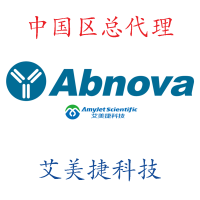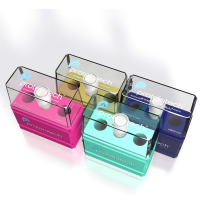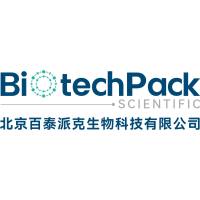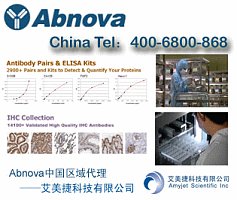Fixation and permeabilization protocol 5/30/91 Mike Finney
互联网
Fixation and permeabilization protocol 5/30/91 Mike Finney
This protocol works for all stages except dauers (which won't open) andhypoclorite-treated eggs (which disintegrate). Luckily, hypochlorite
treatment and fixation are by themselves sufficient to open eggs. This
technique should work for virtually all polyclonal sera most
monoclonals, as long as the major epitopes do not depend on disulfide
bonds. Animals fixed in this way can be stained with X-gal.
1) Fixation:
- Wash animals from an unstarved plate with buffer. Wash them free of
bacteria with water, leaving them in water in a microfuge tube on ice.
- Add cold 2X MRWB to a final concentration of 1X and 20% formaldehyde
to a final concentration of 1-4% (total volume usually 1 ml). Mix well,
freeze in dry ice/ethanol, melt on ice, and incubate on ice with
occasional agitation for 0.5 hr to overnight. Frozen samples may be
processed immediately or stored indefinitely.
Notes: Methanol precipitates proteins, reducing diffusion before
crosslinking. Spermidine and formaldehyde together crosslink proteins.
Formaldehyde concentration and fixation time are important and should be
optimized; a good place to start is 1% for 0.5 hr; more fixation will
stabilize some antigens but destroy others (like unc-86). Freezing
cracks egg shells, letting the fixatives in.
2) Reduction:
- Wash worms twice with Tris Triton buffer, then incubate in
Tris Triton buffer + 1% BME, 1-2 hours at 37degrees with mild agitation.
After this point the worms are fragile and shouldn't be spun hard (5000
rpm in a microfuge is OK).
Note: Steve Salser reports that spinning the worms is essential for the
protocol to work; letting them settle out apparently does not provide
enough stress to open the cuticle.
- Wash worms once in 10-15 vols. 1x BO3 buffer, then incubate in 1x BO3
buffer + 10mM DTT, 15 min with agitation.
Notes: BME and DTT reduce the disulfide linkages that help hold the
cuticle together; Triton keeps the worms from sticking to each other.
The disulfide reduction is complete in minutes; the extended incubation
at 37 degrees is to kill worm enzymes like DNases, proteases and
peroxidases (which wreak havok in the oxidation step).
3) Oxidation:
- Wash worms once in 10-15 vols. 1x BO3 buffer, then incubate in
1x BO3 buffer + 0.3% H2O2, 15 min at room temperature. Agitate gently
but keep tubes upright because the cap may pop open from the O2
pressure.
- Wash once with 1x BO3 buffer and once for at least 15 min with
antibody buffer B. Store worms at 4 degrees in antibody buffer A.
Notes: H2O2 oxidizes the -SH groups to -SO3. Do not over-wash, so
disulfides do not reform. BO3 buffer provides the basic pH needed for
the reaction. Cysteines and methionines in other proteins will be
oxidized as well, possibly affecting some epitopes. Met but not Cys can
be restored by a second DTT treatment.
4) Staining:
Do antibody incubations in buffer A and washes in buffer B.
Buffers:
2X Modified Ruvkun's witches brew (MRWB)
160 mM KCl
40mM NaCl
20 mM Na2EGTA
10 mM Spermidine HCl
30 mM Na PIPES pH 7.4
50% methanol
Tris Triton buffer
100 mM Tris Cl pH 7.4
1% Triton X-100 or NP-40
1 mM EDTA
40x BO3 buffer (pH ~9.2 at 25mM)
1 M H3BO3
0.5 M NaOH
Antibody buffers:
A 1X PBS
1 % BSA
0.5 % Triton X-100 or NP-40
0.05 % Na Azide
1 mM EDTA
B Same as A except 0.1% BSA
20% formaldehyde
Weigh somewhat more dry paraformaldehyde than you need (<300 mg)
and put it in a microfuge tube. Multiply the weight in mg by 4.5 and add
that volume in microliters of 5mM NaOH. Place in 65degree bath for 30
minutes with occasional mixing. Spin for 1 min. to pellet undissolved
paraformaldehyde. Use the supernatant immediately.









